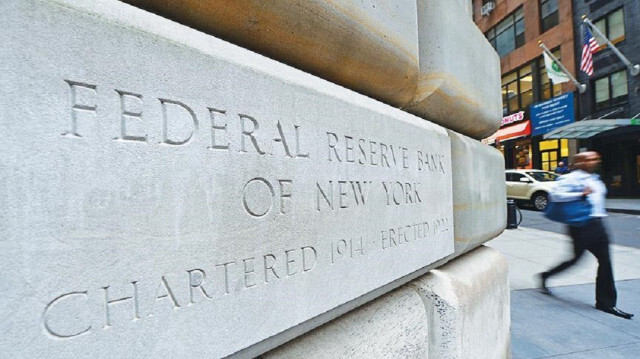
The US Federal Reserve's preferred inflation indicator softened in February both annually and monthly, coming lower than market estimates, according to the Commerce Department figures released Friday.
The core personal consumption expenditures (PCE) price index rose 4.6% annually in February, down from a 4.7% year-on-year gain in January, and coming lower than the market expectation of a 4.7% increase.
On a monthly basis, the index rose 0.3% in February, also softening from a 0.5% monthly gain in January, and lower than the market expectation of a 0.4% increase.
"The increase in current-dollar personal income in February was led by an increase in compensation, mainly from wages and salaries. Private wages and salaries for services-producing industries and government wages and salaries increased," the Commerce Department said in a statement.
"The $27.9 billion increase in current-dollar PCE in February reflected an increase of $25.8 billion in spending for services and an increase of $2.0 billion in spending for goods. Within services, increases in housing and health care were partly offset by a decrease in food services and accommodations," it added.
On a monthly basis, food prices increased 0.2% but energy prices decreased 0.4%, according to the figures.
The PCE price index, which includes food and energy prices, rose 5% annually in February, also easing from a 5.3% year-on-year gain in January, and coming lower than the market estimates of a 5.1% decrease.
On a monthly basis, the index rose 0.3% in February, down from a 0.6% month-on-month gain in January, and also coming lower than the market estimates of a 0.5% increase.
The easing inflation figures indicate that the Fed could soon pause its monetary tightening cycle in interest rate hikes this year.
The US central bank made a total of 425-point rate hikes on seven occasions last year to fight record-high inflation that climbed to its highest level in over 40 years by mid-2022.
The Fed also made a 25 basis points of a rate hike on Feb. 1, followed by another 25 basis points of hike on March 22 that carried its benchmark funds rate to a range of 4.75% to 5%.
President Joe Biden said the US is "making progress" against high prices, but added "the fight against inflation isn’t over."
"Today’s report shows annual inflation down by nearly 30 percent from this summer, against a backdrop of low unemployment and steady growth," he said in a statement released by the White House.
Biden said his administration is working to bring costs down for consumers by investing in strong supply chains.
"This is not the time to turn back to trickle-down economics by cutting American manufacturing and other critical programs American families count on, just to pay for tax cuts for the wealthy, Big Pharma, and Big Oil," he said.
The president said the last thing American economy needs is "the reckless threat of a chaotic default," adding "Those threats must be taken off the table."
US House of Representatives Speaker Kevin McCarthy sent a letter Tuesday to the White House, urging Biden to begin negotiations on the nation's debt ceiling, which may cause a default.
McCarthy said he and Biden sat down two months ago to discuss a solution to the debt ceiling but argued the president's team has been absent since and accused Biden of being "completely missing in action."
While the world's biggest economy hit its debt ceiling Jan. 19, it has never defaulted on its debt. The US' debt ceiling has been raised 22 times between 1997 and 2022.













